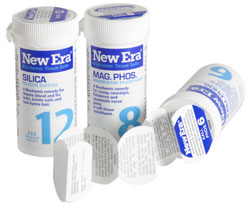A study by AT Kearney, entitled "Global Maturing Consumer", reveals unprecedented increases in the average human lifespan. Falling birth rates and increasing longevity mean that for the rest of this century, the fastest-growing consumer group will be over the age of 60. Locally, latest figures from Stats SA reveal that the percentage of the population aged 60 years and above rose from 7.1% in 1996 to 8.0% in 2011, constituting an increase from 2.8 million to 4.1 million people.

One of the most prominent findings in AT Kearney's study is that older shoppers do not believe they are adequately served by marketers, retailers or manufacturers; and many comments from the 3,000 global participants focused on the difficulties they face with product packaging, saying it is often difficult to open, and that labels, prices and directions in stores are hard to read, even with the aid of glasses. From this study, it's clear that retailers and manufacturers across the globe are failing to meet the specific needs of the massive, growing and global aging population.
When package fronts, labels, and product directions are difficult to read, seniors understandably get frustrated. However, designing packaging with this age group in mind requires a balance between text legibility and package size, especially for food, beverage, prescription drug and over-the-counter (OTC) pharmaceutical packaging.
Small packs, particularly for OTC products, present a problem for marketers and packaging designers in terms of the limited space for product information and branding. They also need to accommodate vast amounts of regulated on-pack information, which often means an illegible font size.
One way to overcome this problem is by using Fix-a-Form® booklet-labels from PackMedia, a Pyrotec brand, to convey this important information. The booklet-label system can be adapted to suit any product or container, and solves a multitude of packaging challenges. Whilst occupying only the space of a standard self-adhesive label, booklet-labels provide almost unlimited space for legislated information, user instructions or product information. For a brand owner or packaging provider, this offers a distinct advantage, especially where space is at a premium.
An additional benefit of Fix-a-Form® booklet-labels for senior consumers is that font sizes can be increased and contrasting colours can be utilised for better legibility - without having any impact on legal requirements, the packaging's visual appeal, design elements, or the product's branding.
Packaging for seniors should be subtle and functional. While no-one wants to think of themselves as elderly, there's no escaping the fact that within 25 years, individuals older than 85 will represent more than 8% of the population in Japan and between 3 to 5% of people in Europe and the US. Adapting to the requirements of mature consumers can have extensive benefits, and competitive advantages, for retailers and manufacturers.
To download high resolution images, please go to:
https://www.dropbox.com/s/6yko6m8fgk9cetp/Fix-a-Form%20Seniors.jpg?dl=0
